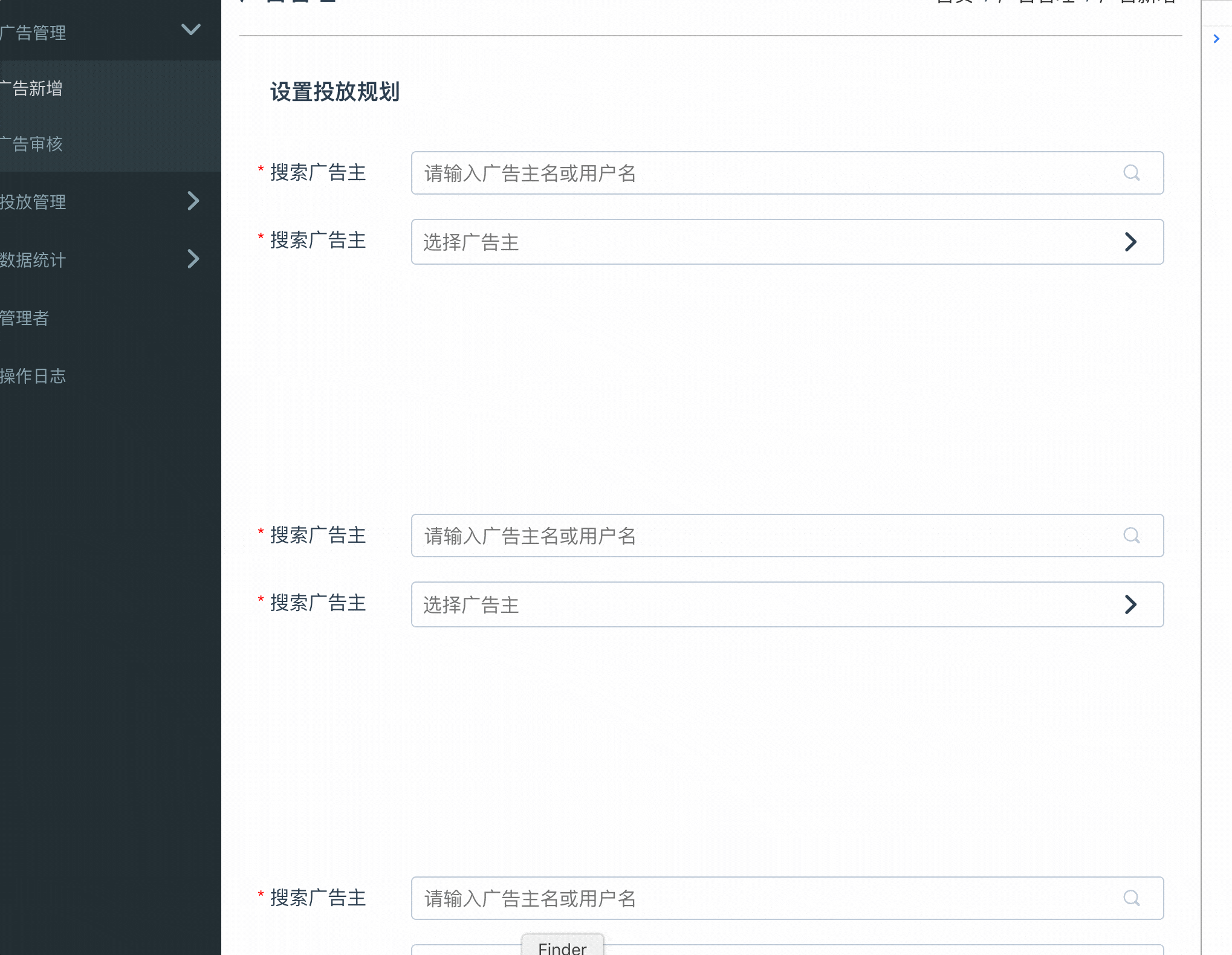这篇文章主要介绍了Vue如何实现一个返回顶部backToTop组件,具有一定借鉴价值,感兴趣的朋友可以参考下,希望大家阅读完这篇文章之后大有收获,下面让小编带着大家一起了解一下。
Vue具体轻量级框架、简单易学、双向数据绑定、组件化、数据和结构的分离、虚拟DOM、运行速度快等优势,Vue中页面使用的是局部刷新,不用每次跳转页面都要请求所有数据和dom,可以大大提升访问速度和用户体验。
前言
返回顶部这个功能用jq实现,好容易实现,一个animate配合scrollTo就搞定了
今天我们来试试vue封装一个原生js实现的返回顶部;
写起来够呛,借助github,看了别人的gist,稍微封装了下;
当然不是用scrollTo直接调位那种,没有过渡效果怎么说得过去!!还是捣鼓出来了.
废话不多说,看效果图…
效果图

实现思路
过渡用的是requestAnimationFrame,这货只支持IE10+,所以必须做兼容
滚动视图是window.pageYOffset,这货支持IE9+;
为了让可控性更强,图标采用iconfont,具体瞅代码
你能学到什么?
学到一些页面计算相关的东东
动画API的一些知识
Vue封装组件相关知识和生命周期和事件监听销毁相关知识的运用
实现功能
视图默认在350处显示返回顶部的按钮和图标
提示文字和颜色,在图标上下左右的自定义,字段都限制了格式和默认值
图标颜色和形状,大小的自定义,字段都限制了格式和默认值
过渡动效的自定义,用法:scrollIt(0, 1500, 'easeInOutCubic', callback);
返回到视图的point,也就是滚动到哪里
过渡时间(ms级别)
一堆过渡效果,字符串格式,其实就是滚动的计算函数..
当然少不了默认参数了,除了callback
兼容性是IE9+,特意开了虚拟机去尝试
代码
scrollIt.js –过渡滚动实现
export function scrollIt(
destination = 0,
duration = 200,
easing = "linear",
callback
) {
// define timing functions -- 过渡动效
let easings = {
// no easing, no acceleration
linear(t) {
return t;
},
// accelerating from zero velocity
easeInQuad(t) {
return t * t;
},
// decelerating to zero velocity
easeOutQuad(t) {
return t * (2 - t);
},
// acceleration until halfway, then deceleration
easeInOutQuad(t) {
return t < 0.5 ? 2 * t * t : -1 + (4 - 2 * t) * t;
},
// accelerating from zero velocity
easeInCubic(t) {
return t * t * t;
},
// decelerating to zero velocity
easeOutCubic(t) {
return --t * t * t + 1;
},
// acceleration until halfway, then deceleration
easeInOutCubic(t) {
return t < 0.5 ? 4 * t * t * t : (t - 1) * (2 * t - 2) * (2 * t - 2) + 1;
},
// accelerating from zero velocity
easeInQuart(t) {
return t * t * t * t;
},
// decelerating to zero velocity
easeOutQuart(t) {
return 1 - --t * t * t * t;
},
// acceleration until halfway, then deceleration
easeInOutQuart(t) {
return t < 0.5 ? 8 * t * t * t * t : 1 - 8 * --t * t * t * t;
},
// accelerating from zero velocity
easeInQuint(t) {
return t * t * t * t * t;
},
// decelerating to zero velocity
easeOutQuint(t) {
return 1 + --t * t * t * t * t;
},
// acceleration until halfway, then deceleration
easeInOutQuint(t) {
return t < 0.5 ? 16 * t * t * t * t * t : 1 + 16 * --t * t * t * t * t;
}
};
// requestAnimationFrame()的兼容性封装:先判断是否原生支持各种带前缀的
//不行的话就采用延时的方案
(function() {
var lastTime = 0;
var vendors = ["ms", "moz", "webkit", "o"];
for (var x = 0; x < vendors.length && !window.requestAnimationFrame; ++x) {
window.requestAnimationFrame =
window[vendors[x] + "RequestAnimationFrame"];
window.cancelAnimationFrame =
window[vendors[x] + "CancelAnimationFrame"] ||
window[vendors[x] + "CancelRequestAnimationFrame"];
}
if (!window.requestAnimationFrame)
window.requestAnimationFrame = function(callback, element) {
var currTime = new Date().getTime();
var timeToCall = Math.max(0, 16 - (currTime - lastTime));
var id = window.setTimeout(function() {
callback(currTime + timeToCall);
}, timeToCall);
lastTime = currTime + timeToCall;
return id;
};
if (!window.cancelAnimationFrame)
window.cancelAnimationFrame = function(id) {
clearTimeout(id);
};
})();
function checkElement() {
// chrome,safari及一些浏览器对于documentElemnt的计算标准化,reset的作用
document.documentElement.scrollTop += 1;
let elm =
document.documentElement.scrollTop !== 0
? document.documentElement
: document.body;
document.documentElement.scrollTop -= 1;
return elm;
}
let element = checkElement();
let start = element.scrollTop; // 当前滚动距离
let startTime = Date.now(); // 当前时间
function scroll() { // 滚动的实现
let now = Date.now();
let time = Math.min(1, (now - startTime) / duration);
let timeFunction = easings[easing](time);
element.scrollTop = timeFunction * (destination - start) + start;
if (element.scrollTop === destination) {
callback; // 此次执行回调函数
return;
}
window.requestAnimationFrame(scroll);
}
scroll();
}backToTop.vue
<template>
<div class="back-to-top" @click="backToTop" v-show="showReturnToTop" @mouseenter="show" @mouseleave="hide">
<i :class="[bttOption.iClass]" :></i>
<span class="tips" :class="[bttOption.iPos]" : v-show="showTooltips">{{bttOption.text}}</span>
</div>
</template>
<script>
import { scrollIt } from './scrollIt'; // 引入动画过渡的实现
export default {
name: 'back-to-top',
props: {
text: { // 文本提示
type: String,
default: '返回顶部'
},
textColor: { // 文本颜色
type: String,
default: '#f00'
},
iPos: { // 文本位置
type: String,
default: 'right'
},
iClass: { // 图标形状
type: String,
default: 'fzicon fz-ad-fanhuidingbu1'
},
iColor: { // 图标颜色
type: String,
default: '#f00'
},
iFontsize: { // 图标大小
type: String,
default: '32px'
},
pageY: { // 默认在哪个视图显示返回按钮
type: Number,
default: 400
},
transitionName: { // 过渡动画名称
type: String,
default: 'linear'
}
},
data: function () {
return {
showTooltips: false,
showReturnToTop: false
}
},
computed: {
bttOption () {
return {
text: this.text,
textColor: this.textColor,
iPos: this.iPos,
iClass: this.iClass,
iColor: this.iColor,
iFontsize: this.iFontsize
}
}
},
methods: {
show () { // 显示隐藏提示文字
return this.showTooltips = true;
},
hide () {
return this.showTooltips = false;
},
currentPageYOffset () {
// 判断滚动区域大于多少的时候显示返回顶部的按钮
window.pageYOffset > this.pageY ? this.showReturnToTop = true : this.showReturnToTop = false;
},
backToTop () {
scrollIt(0, 1500, this.transitionName, this.currentPageYOffset);
}
},
created () {
window.addEventListener('scroll', this.currentPageYOffset);
},
beforeDestroy () {
window.removeEventListener('scroll', this.currentPageYOffset)
}
}
</script>
<style scoped lang="scss">
.back-to-top {
position: fixed;
bottom: 5%;
right: 100px;
z-index: 9999;
cursor: pointer;
width: auto;
i {
font-size: 32px;
display: inline-block;
position: relative;
text-align: center;
padding: 5px;
background-color: rgba(234, 231, 231, 0.52);
border-radius: 5px;
transition: all 0.3s linear;
&:hover {
border-radius: 50%;
background: #222;
color: #fff !important;
}
}
.tips {
display: inline-block;
position: absolute;
word-break: normal;
white-space: nowrap;
width: auto;
font-size: 12px;
color: #fff;
z-index: -1;
}
.left {
right: 0;
top: 50%;
margin-right: 50px;
transform: translateY(-50%);
}
.right {
left: 0;
top: 50%;
margin-left: 50px;
transform: translateY(-50%);
}
.bottom {
bottom: 0;
margin-top: 50px;
}
.top {
top: 0;
margin-bottom: 50px;
}
}
</style>感谢你能够认真阅读完这篇文章,希望小编分享的“Vue如何实现一个返回顶部backToTop组件”这篇文章对大家有帮助,同时也希望大家多多支持亿速云,关注亿速云行业资讯频道,更多相关知识等着你来学习!
免责声明:本站发布的内容(图片、视频和文字)以原创、转载和分享为主,文章观点不代表本网站立场,如果涉及侵权请联系站长邮箱:is@yisu.com进行举报,并提供相关证据,一经查实,将立刻删除涉嫌侵权内容。